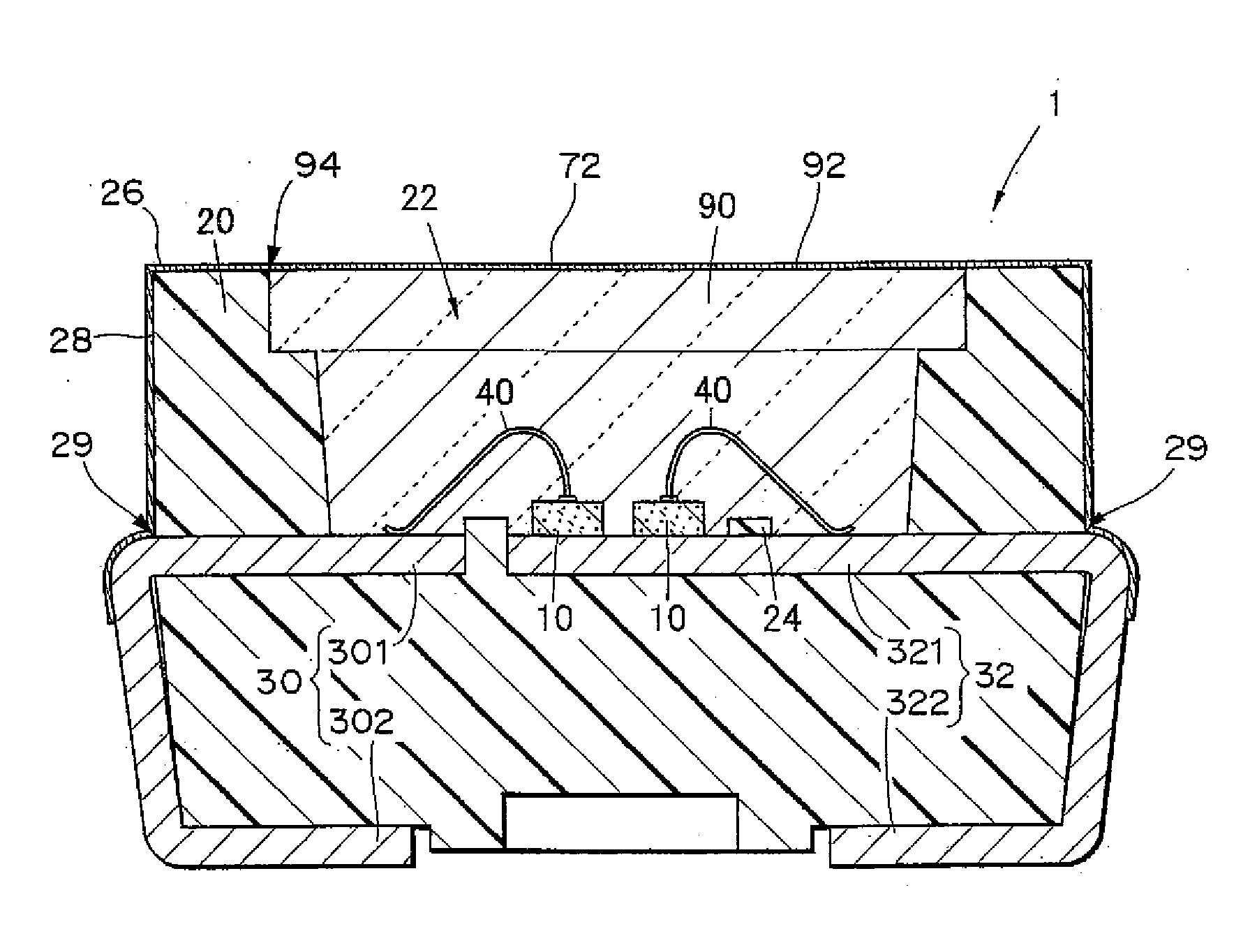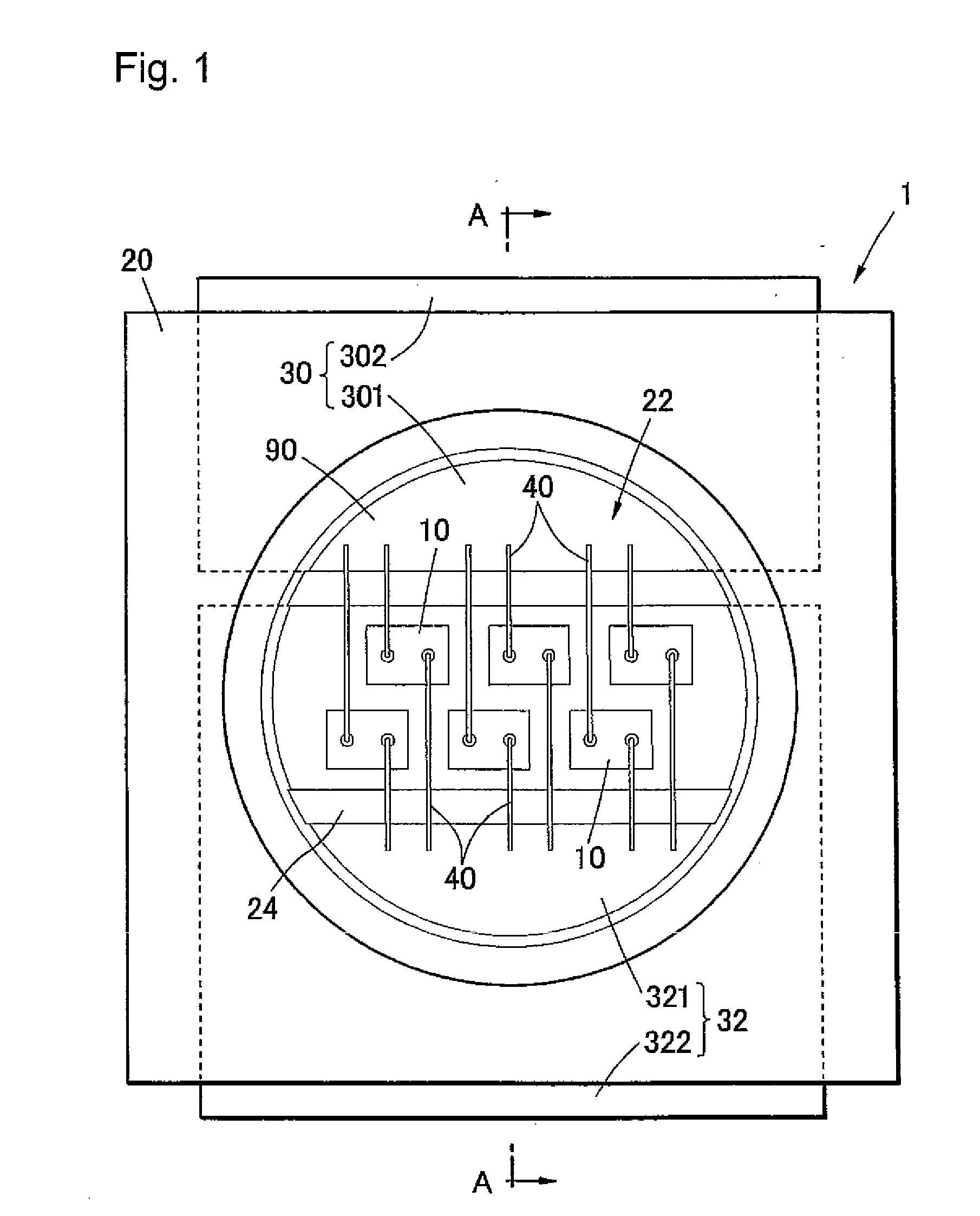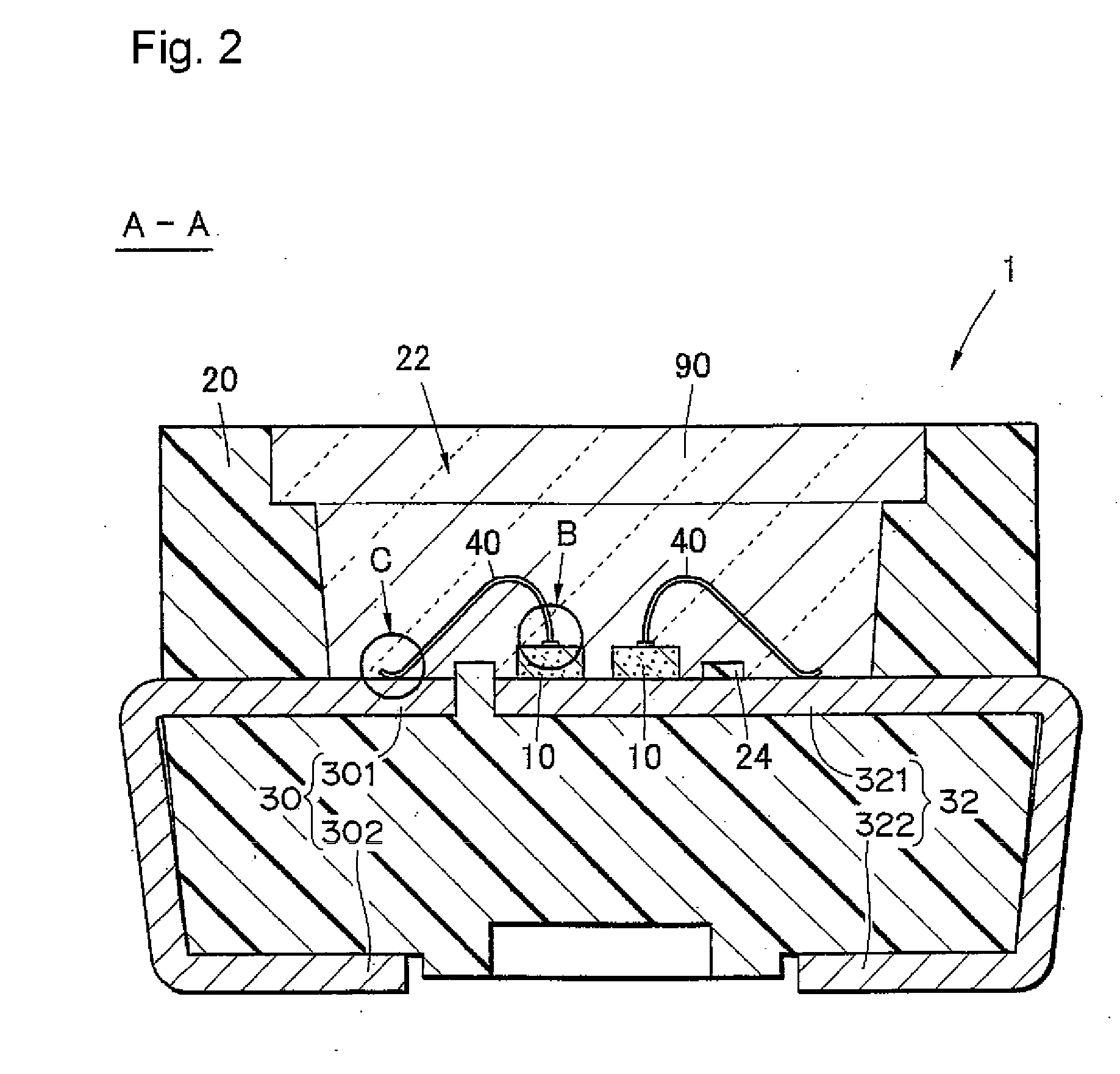Light emitting device and method of manufacturing the same
a technology lead electrodes, which is applied in the direction of semiconductor devices, semiconductor/solid-state device details, electrical apparatus, etc., can solve the problems of insufficient bonding strength, low bonding between light emitting elements and lead electrodes, and the expected improvement of light extracting efficiency of light emitting devices
- Summary
- Abstract
- Description
- Claims
- Application Information
AI Technical Summary
Benefits of technology
Problems solved by technology
Method used
Image
Examples
embodiment 1
[0033]FIG. 1 and FIG. 2 show a light emitting device 1 according to the present embodiment, provided with a package using a lead frame as a base. Light emitting elements 10 are mounted face-up within a recess 22 of a package 20. Further, a pair of lead electrodes (first electrode 30, second electrode 32) are placed penetrating the package 20 as electrically conductive members. An end portion of each lead electrode 30, 32 is exposed in the recess 22 to form an inner conductive portion (lead electrode) 301, 321, respectively. The other end of each lead electrode 30, 32 penetrates through the package 20 to form an external conductive portion (external terminal) 302, 322, respectively. A pair of electrodes (not shown) disposed on each of the light emitting elements 10 are electrically connected to a pair of lead terminals (first lead terminal 301, second lead terminal 322) via conductive wires 40 respectively.
[0034]FIG. 3 is a partially enlarged cross sectional view of a bonding portion...
embodiment 2
[0083]The light emitting device 1 shown in FIG. 13 is of a type which includes a package that has a lead frame as its base, as in Embodiment 1. Arrangement of the light emitting elements 10, wiring of the conductive wires 40, and shapes of the first lead electrodes 30 and the second lead electrode 32 are different from that in Embodiment 1. Further, in the present embodiment, a mounting portion 36 which is different from the lead electrode is provided to mount the light emitting elements 10.
[0084]In the present embodiment, as shown in FIG. 13, adjacent light emitting elements 10 are connected with the conductive wires 40 so that a plurality of the light emitting elements 10 are electrically connected in series. In this wiring, the conductive wire 40 is thermally compressed to each of the light emitting elements 10 between the first bond 50 and the second bond 60. In the present specification, such a thermally compressed portion is referred to as “stitch bond 68” and the wiring type ...
examples
[0088]A plurality of samples with modified structures are formed according to the light emitting device 1 shown in FIG. 1 and FIG. 13, and a lighting test is performed.
(1. Formation of Package 20)
[0089]As measurement samples, packages of a lead frame type and a substrate type are formed. In case of packages of lead frame type, a lead frame made of a copper-alloy is used, and in case of the samples indicated as Ag in “Covering material of lead frame”, Ag film is disposed on the surface of the lead frame. A thermoplastic resin (polyphthalamide) is used for the package material and the packages are made by injection molding.
[0090]In case of packages of substrate type, a ceramics substrate of Al2O3 or a glass epoxy substrate provided with electrode wiring is used.
(2. Die Bonding Step)
[0091]A light emitting element 10 is die-bonded onto each package by way of resin bonding using a silicone resin binding material, a modified silicone binding material, an epoxy resin bonding material, or t...
PUM
 Login to View More
Login to View More Abstract
Description
Claims
Application Information
 Login to View More
Login to View More - R&D
- Intellectual Property
- Life Sciences
- Materials
- Tech Scout
- Unparalleled Data Quality
- Higher Quality Content
- 60% Fewer Hallucinations
Browse by: Latest US Patents, China's latest patents, Technical Efficacy Thesaurus, Application Domain, Technology Topic, Popular Technical Reports.
© 2025 PatSnap. All rights reserved.Legal|Privacy policy|Modern Slavery Act Transparency Statement|Sitemap|About US| Contact US: help@patsnap.com



